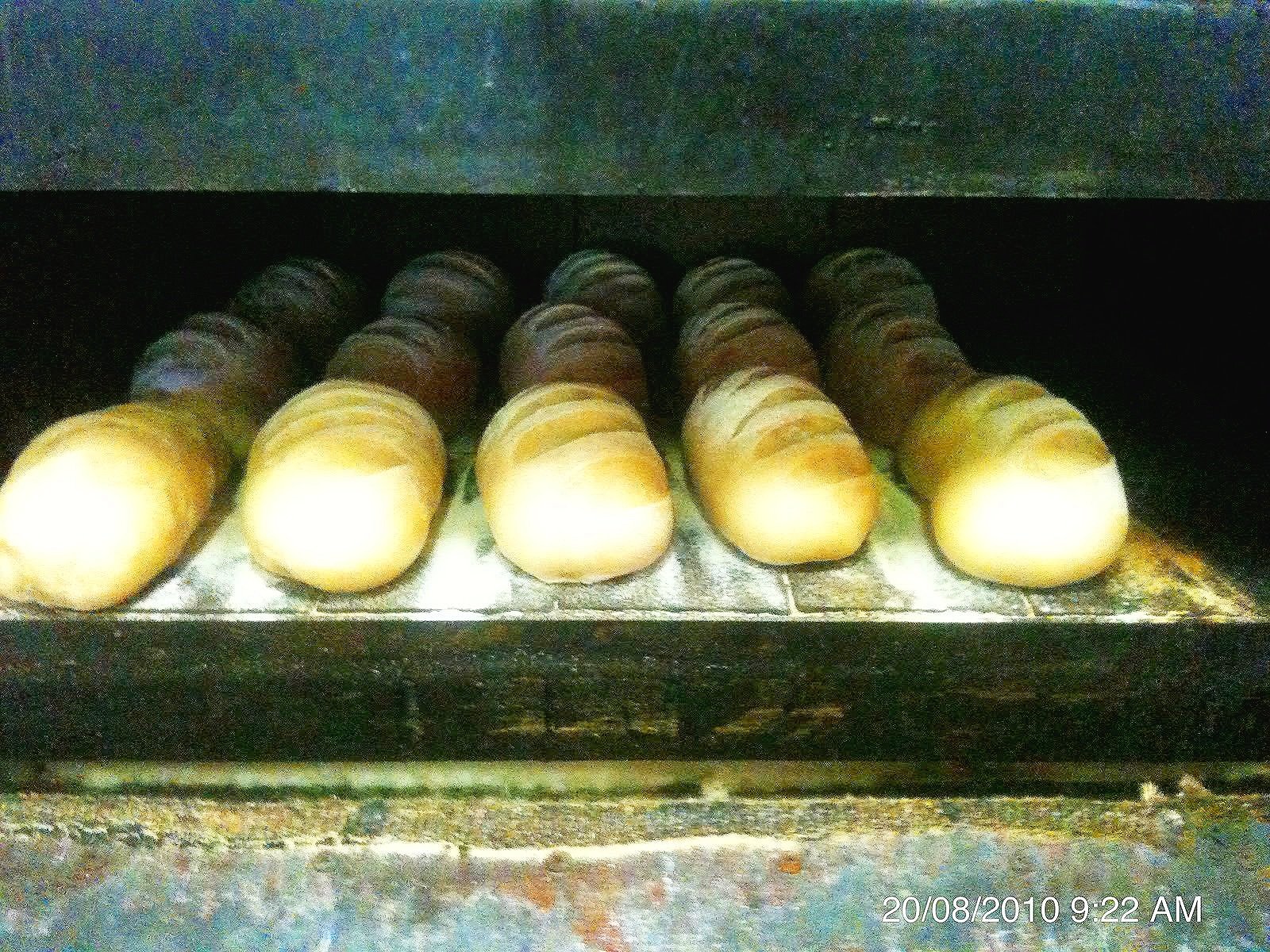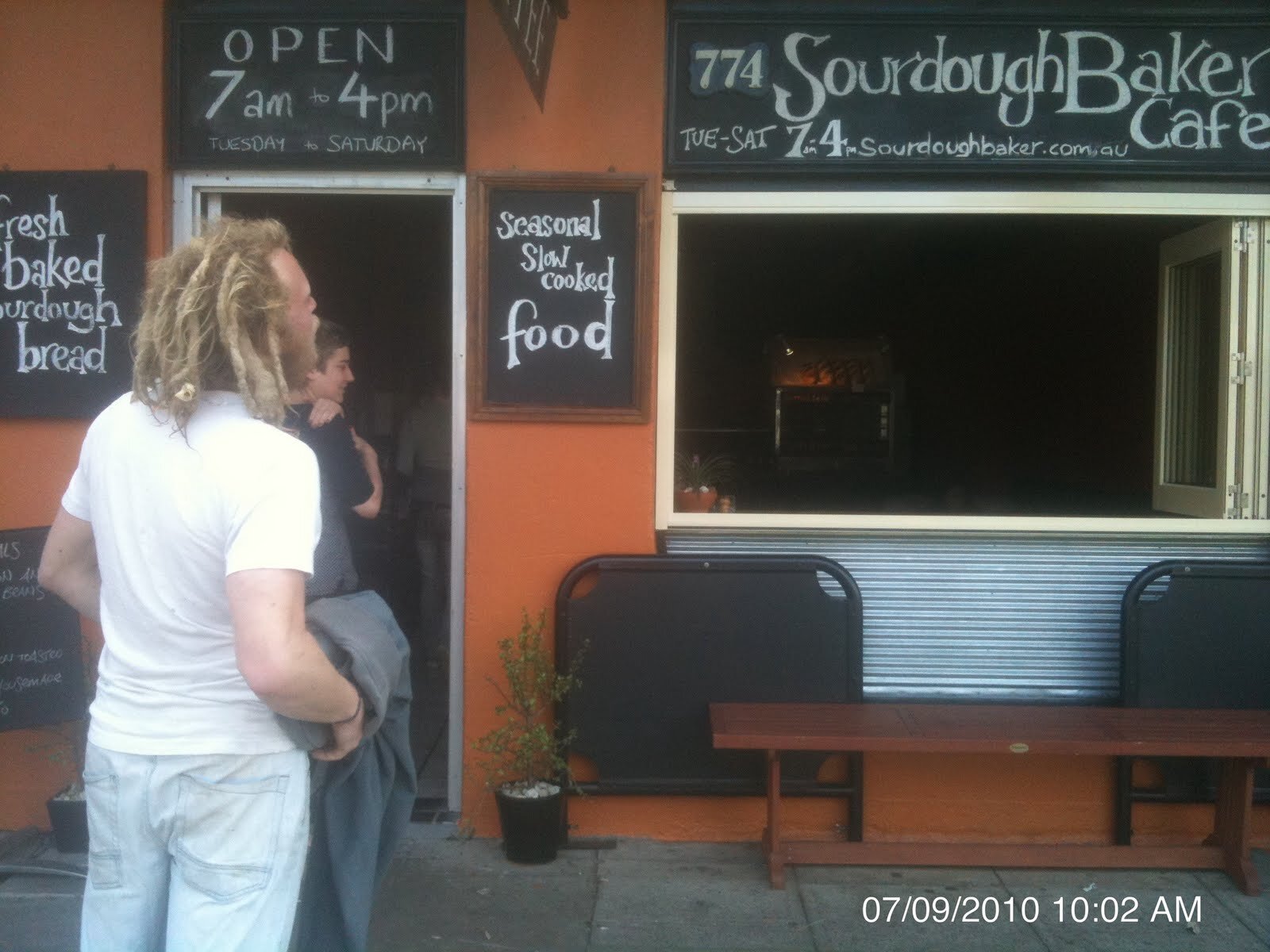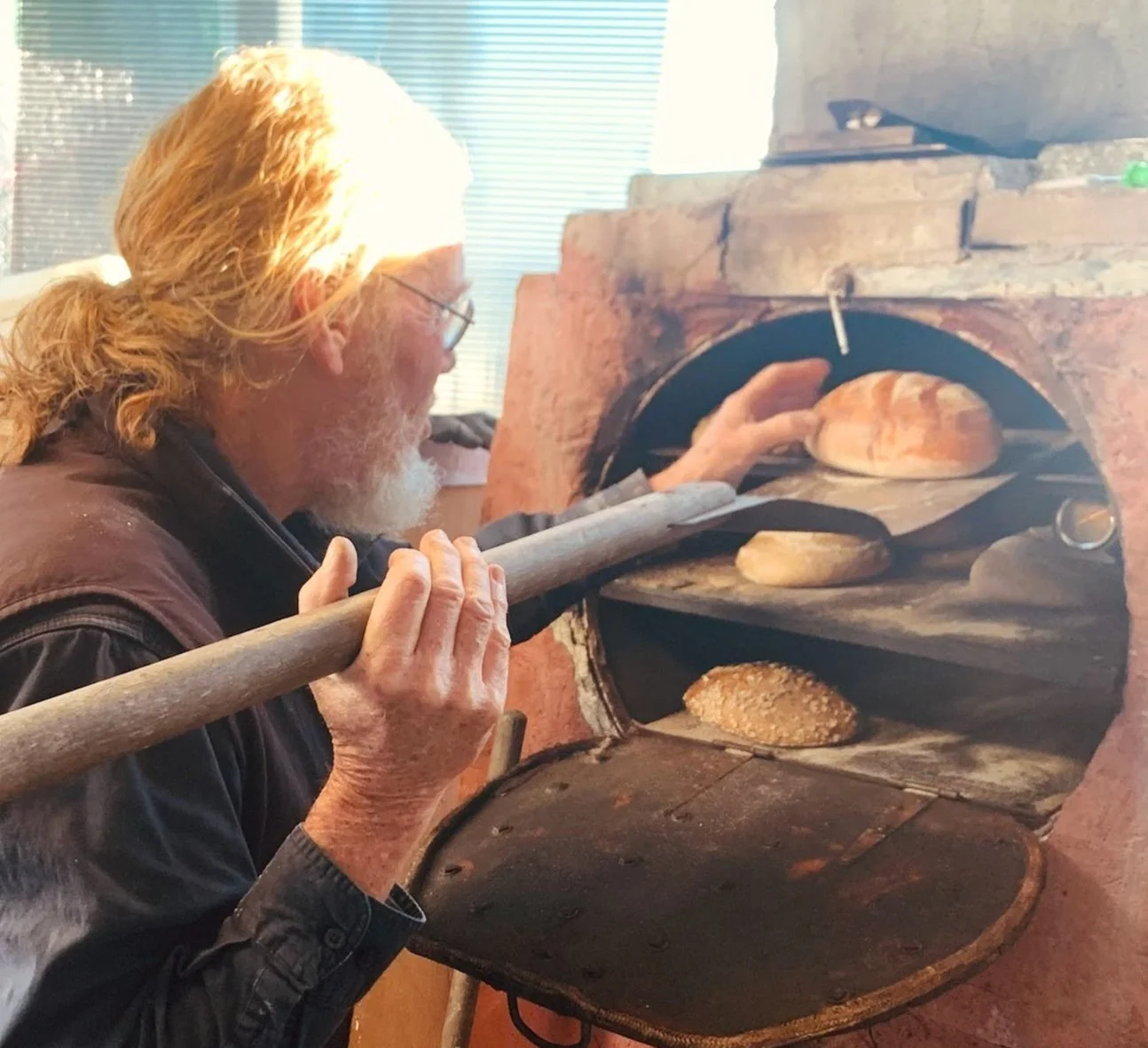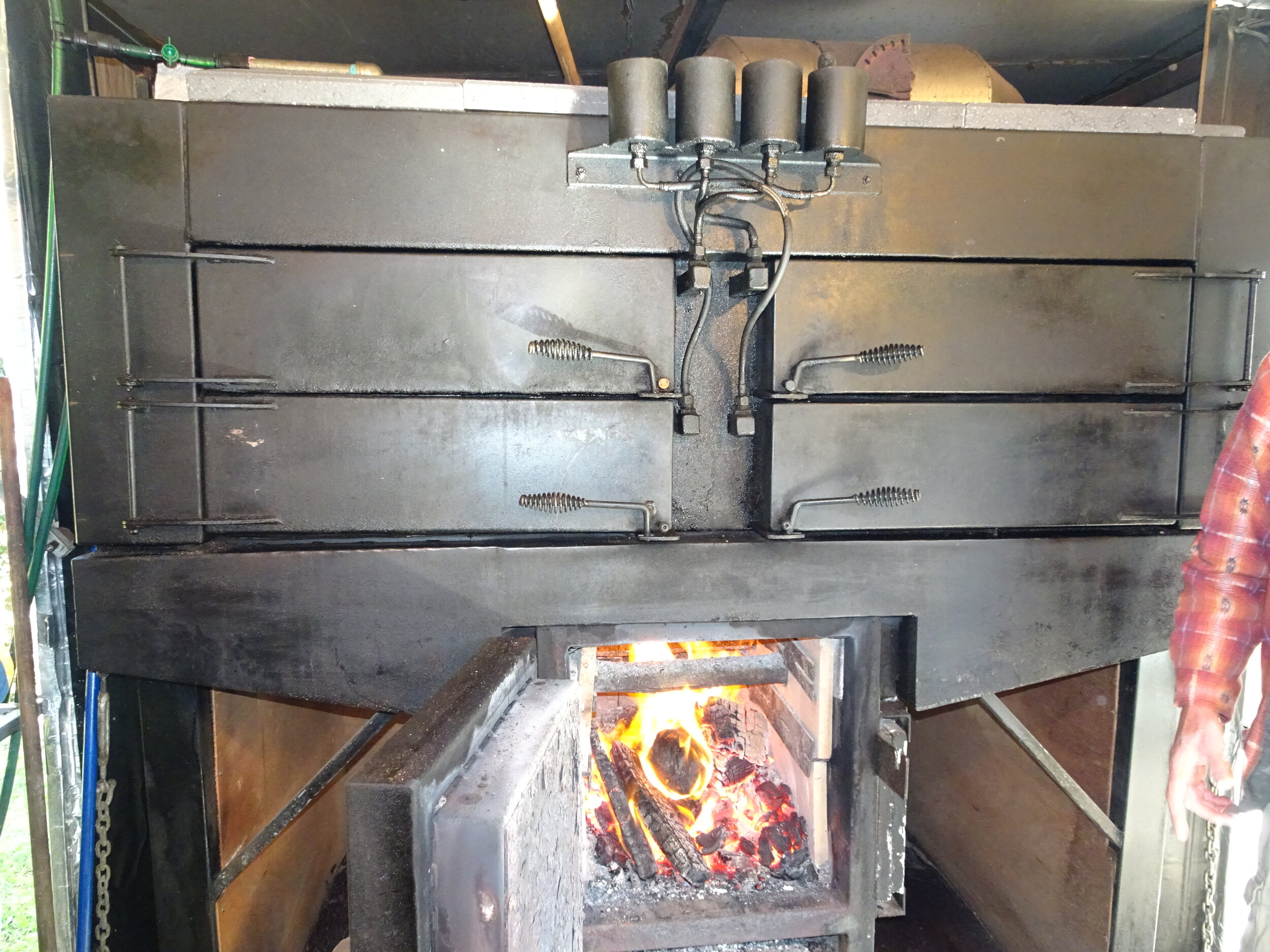Fifteen years of my sourdough evolution

The other day I was turning flour and water into dough (as I tend to do) and I was thinking about the processes I use these days to make my bread, versus the way I made it 15 years ago. Turns out, I’ve come full circle. Every revolution is an evolution, I guess, but I thought it might be interesting to tie the story of the bread to the baker over 15 years.
I’ve been baking professionally for over 30 years now, of course, but it has been 15 years since I discovered the desem (very thick starter) technique, and I guess that’s why I’m still here. If it hadn’t reinvented the way I bake fifteen years ago, I’d be lost to something else - another obsessive interest may well have taken my attention. After a million loaves one does to think they have it all sorted out I guess. But I was very wrong. I think it has been the process of relearning that has kept me going in the trade!
The story of how I arrived at desem as a technique (quite by accident, btw) has been written about here. In a nutshell, by changing my starter from a liquid to a dough consistency, my bread became a whole new thing. For context, I had been a pioneer of the sourdough movement from the 1990s, and I took the long way home, so to speak.
My bakery was one of the first to make what we called ‘naturally leavened’ breads in Australia back in the 1990s. That’s all we did, there wasn’t a packet of yeast in sight. Sourdough hadn’t been established as a ‘thing’. Anyway, we didn’t like the connotations of the term ‘sourdough’, so we didn’t use it. Seemed to us early day ‘sourdough bakers’ that the term would put people off. We chose to run with ‘naturally leavened’, which to my mind is a better way of describing what is in fact a whole universe of breads. In the early 1990s, the only reason for naturally leavened breads of any kind to exist in Australia (home of the ‘white square’ and very few other types of bread ) was to do with nutrition rather than sensation. Despite our efforts to include all kinds of naturally leavened breads in our product range, ‘sourdough’ became the thing, and it has become a more refined version of itself ever since.
‘Sourdough’ then, as a generic style of bread, is characterised by a loose crumb, sharp crust and a slightly lactic flavour. It has become fairly uniform, world wide - kind of archetypal. From San Francisco to Sicily to Sydney, sourdough is the same, commodified and consumable by its sameness. There is allowed some variation within the genre, of course, but not much.
Background note: In bakers terms. the word ‘sourdough’ is an abbreviation of ‘soured dough’, meaning dough that has ‘soured’, or in other words, to have ripened beyond the point of ‘sweetness’. That’s a thing because many bakery processes involve the culturing of yeast, and as the baker sets the culture off, they also must tend to it as it ripens, and capture it at the perfect moment for baking. In general, this ‘perfect moment’ is when the culture is at its most active, because this is also when the product is largest in size. Over time, the culture gradually ‘sours’, it produces more and more lactic acid It can be used in various stages of sourness, or fermentation. For some things, young fermentation is best. For others, more sourness, or an ‘older’ fermentation is chosen. Bakers look for ways to utilise this natural process. Two examples of this are ‘pre fermentation’ and ‘discard’ . Over time, bakery processes have incorporated different types and stages of leavening to create different tastes and textures in their breads and other baked goods.
As someone who has digested a whole world’s worth of ‘soured dough’, over a few decades, I can tell you not all naturally leavened breads are like our generic sourdough of today. From the dark ryes of middle Europe, to the consistently even crumb achieved in various wholegrain and loaf forms made by village bakeries throughout the western world, to the flatbreads of the middle east, to the regional specialties through France and Italy, ‘natural leaven’ or ‘soured dough’ can take on many characteristics - and all of the mutations contain ‘soured dough’ of some kind or another.
So with all that background covered, lets have a look at my bread over the past decade and a half. Not only was I converted to the Desem starter, I was also starting to explore wood fired baking, after having used mostly electricity and gas to fuel my ovens for the past 15 years. This led to another revolution - baking on the sole (also known as ‘hearth baking’). So around about 2008 I began experimenting with baking on the sole of my home oven using baking stones and pavers and the like. It proved to be a very attractive way of baking - there were no messy tins or trays involved, and it allowed you to create virtually any size or shape of bread without requiring a special tin or banneton to hold it in place while the dough proofed. And, the biggest attraction of all was the amount of ‘bloom’ or kick the bread got when baked. It was, for someone who had produced almost all his bread on tins and trays for the past decade or more, a revelation.
And the revelations kept coming, as I gradually developed my own techniques using the thick starter. I found that pre fermentation was really useful, for example, which in the past I had relegated to the ‘interesting but of no practical application’ category of my thought process. Then I discovered the need to de-gas dough a number of times before setting it on the sole of the oven, so that the dough would ‘stand proud’. rather than ‘go sideways’. I documented all of this in my blog at the time, ‘Home Sourdough Bread’, the forerunner site to this one.
One thing led to another, and before I knew it, I found myself wanting to try this new technique out in a commercial setting, so I bought a cafe in Newcastle and converted it into a wood fired bakery and cafe. I had no mixer, and a tiny woodfired oven I had bought from Bunnings at the time. I made dough by hand in 10kg batches, and baked them on the sole of my tiny wood fired oven, 2 loaves at a time.
This soon became untenable, and I worked with a local fabricator to make a cafe style wood fired oven as a prototype for the cafe. I’ve written about this a number of times now, so I won’t go into it here. In fact there is a good version of how this oven came into the world in the link I’ve just added in the previous paragraph.
Eventually, the cafe became so popular that I required a spiral mixer to keep up with the doughmaking. (Of course having a chef like Paul West was definitely a drawcard!) I was very familiar with these mixers, having used large ones for years in the Blue Mountains bakery. Now I had a small one, producing 20kg at a time. I developed my technique to incorporate a three stage process - pre fermentation, fermolyse and then final mixing before bulk proofing - and was very happy with the bread I was making. This basic process has become the backbone of my doughmaking ever since.
Through successive Newcastle and Hunter Valley locations, the technique became more streamlined. I did a lot of analysis on the various stages as I went along. I took data with regard to time and temperature, and built this data into what has become an incredibly flexible process. I now teach this process exclusively in all my workshops, to the general public and the baking trade. I have translated it into over a dozen bakeries around the south pacific region now, and it has proven itself as a reliable way to achieve a quality sourdough product.
The basic process remains the same today in my own micro bakery after 15 years, though I’ve developed a certain expertise in using it now, which allows me to tweak times and temperatures to suit my setup and my lifestyle beautifully. I’ve gone back to making dough by hand, using my ‘dough trough’ - I find this a very relaxing and comfortable way of making up to 60 kg of dough in a baking session. My spiral mixer is still tucked away out the back, needing repairs after a fire some 2 years ago, but honestly, I prefer the type of bread I make by hand! It’s more moist, and substantial. The dough trough is also a very good way to teach dough making, as it is like a slow motion observation of gluten being developed, and this is an excellent conceptual base for bakers as they learn to make dough in the traditional way.
I guess one of the main ways the process has evolved for me is in the way I proof dough. I utilise temperature control using both refrigeration and proofing equipment in almost every stage. Here in Gloucester in my semi outdoor setup, I contend with all the extremes of the seasons - hot summers and cold winters being the main variables. My setup has massive variations in temperature throughout the year, so I need to be able to warm up dough as well as chill it down. As such, temperature adjustable refrigeration is critical for both bulk proofing and for ‘retarding’ shaped dough before baking. This hearkens back to my days running my factory sized bakery in the Blue Mountains, where we had a huge coolroom and a wheel-in proofer which handled racks of processed or semi processed dough. My current setup is tiny by comparison, but follows the same principles. The dough will travel through a number of changes in temperature during proofing, according to schedule requirements and temperature variations within each bake. In a nutshell, I use cold to ‘retard’ dough, and warm to ‘de-skin’ it before baking. So two of the most important tools of the trade for me are my fridge and my proofer.
But the most important tool is the oven. Over this 15 year period, I’ve designed and built a lot of wood fired ovens - everything from fully commercial, wheel-in ovens made of steel, sand and brick, to full masonry ovens which are permanent fixtures built onsite. Currently I’m using a ‘barrel’ oven I made during lockdown a couple of years back. It’s an oven I designed specifically for my current use case of weekly baking, rather than daily baking, as was the case 15 years ago. The big difference between this oven and previous ones is the size, as well as the way it heats up. The barrel oven is designed to heat up quickly, and to hold heat for only as long as required to finish the bake. It takes about 2 to 3 hours to become really saturated with heat, and can be run continuously for 8 to 12 hours comfortably, with minimal fuel. In fact, it could run continuously, however the retained heat in the steel and bricks builds up over time, and the baking characteristics change quite a bit after running it for many hours. The barrel oven also has a nice feature - it ‘gasifies’ the wood it burns, which effectively means that it burns the smoke that comes off the wood. I have played around with wood gasifier technology for many years now, but this is the first version I’ve designed which actually works in my oven. Wood gasification has been around forever, but I haven’t seen it really being reinvented for this purpose as its own special technology. I have recently modified my bakery oven plans (which you can buy from our sister site, SchoolOfSourdough.com.au) to include this gasifier system, as it’s proven to be so good in the barrel oven.
Luna, my last oven, was 3 times the size of the Barrel oven.
Ten years ago, my oven was three times the size, and it took 5 to 8 hours to really get soaked with heat from cold. It could hold this heat as long as a fire was maintained, and afterwards most of the heat would last for many hours. This meant the baker could fire it up to baking temperature each day more quickly from retained heat from the previous day’s baking. So once this oven was in daily use, it took only an hour or so to heat it to baking temps.
So while I’m still baking with wood as my fuel, the amount of fuel, as well as the type, has changed. With the big oven, Luna, I needed hardwood. Now I can run my oven on softwood and hardwood, though it actually prefers softwood. The big oven required my visiting the sawmill for hardwood offcut on a regular basis. Eventually I would hire a truck and get a few cubic metres at a time. I thought this was as cheap as I could get fuel, but I was wrong. My little barrel oven will usually be running on scrappy pallet timber, mostly pine, which is delivered to me from a local manufacturer for free. There are more empty pallets where I live than we can use, as there are a number of small factories/fabricators around the town, and they all have piles of pallets to dispose of on a regular basis. These pallets are often (but not always) too far gone to be reused or made into woodwork items (as my neighbour does) so most of the businesses have to turn them into woodchip or pay to dispose of them. My little operation is a useful service for them, although I admit I cannot use anywhere near the amount of waste timber they generate.
So I use this oven to bake bread and also to help a local factory utilise some of their waste. And my energy bills are substantially lower than they have ever been. For fifteen years now, I’ve been reducing my fuel costs in order to bake more efficiently. It began when I discovered sawmill offcuts, which reduced the cost of having wood split and delivered. Then, when I began baking regularly using the smaller oven, I was able to use old pallets, and this has truly been a game changer. Essentially, it has made me see that a bakery can play a role in the wider business community by utilising waste fuel of all kinds to create heat to bake food. Indeed, I can imagine other types of waste fuel burning devices (not necessarily ovens either - they could be furnaces to power things like sand batteries and the like). This is a subject for another article, in fact - as I think there could be a serious use case to run some sort of micro power generation equipment from all this waste material. It seems to me we are forever looking to invent new ways to ‘save the planet’, but we simply don’t properly address the waste we generate now in a productive way.
My core belief is the planet doesn’t need saving. We need to preserve resources, look to the past for clues on how to do this, and through this, create less waste and pollution. If we don’t, the planet will simply eliminate humans as part of its own survival mechanism. The answer to our problems does not lie in future technology, this is magical thinking. Many older technologies have been tried and refined, over centuries in some cases. These technologies can be further developed, especially now we have so much more information at our disposal. As a society, we are very wasteful, and if I’ve been able to show anything over the years, it’s upcycling and reinvention which I believe can help us to live in a more balanced way on this beautiful planet.
So if you are thinking of creating your own little bakery to serve your community, and you like the ideas I’m working with and maybe need some help to get things off the ground, why not get in touch? I have a baker mentoring service for beginning bakers, and a bakery setup service as well. Also, in the popular 300 series workshops, we now include an optional unit on Bakery Setup 101.
Give me a call on
0409 480 750
to discuss your ideas!










